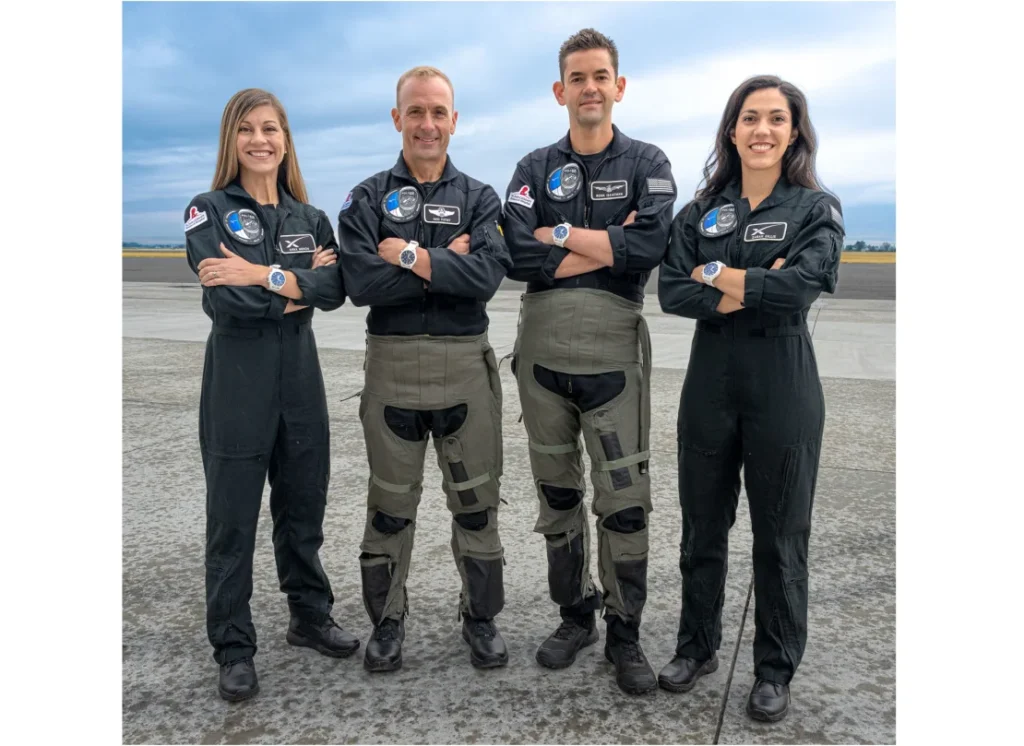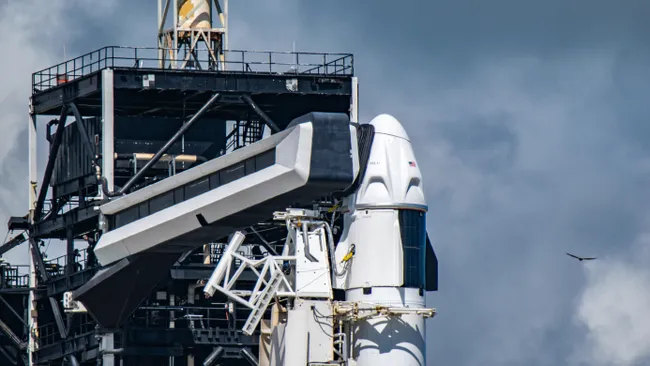Polaris Dawn: A Historic Leap into Space
Polaris Dawn, a groundbreaking space mission undertaken by SpaceX and the Polaris Program, successfully launched today, September 13, 2024, at 5:23 AM from NASA’s Kennedy Space Center in Florida. This ambitious mission marks a significant milestone in private space exploration, as it is the first crewed mission in the Polaris Program, pushing the boundaries of human spaceflight with scientific research, technological advancements, and a focus on public outreach.
The Polaris Dawn Mission
The primary objectives of the Polaris Dawn mission are as follows:
- Scientific Experiments: The crew is conducting various scientific experiments to enhance our understanding of human physiology and performance in space. These experiments include studying the effects of radiation exposure, testing advanced spacesuits, and conducting research on the human immune system in space.
- Technological Demonstrations: The mission aims to test new technologies crucial for future space exploration, such as Starlink satellite laser communication and spacesuit designs that could be used for lunar missions.
- Public Outreach: Polaris Dawn serves as a platform for public outreach and education, inspiring the next generation of explorers and scientists through live updates, social media, and educational initiatives.
The Crew
The Polaris Dawn mission is commanded by Jared Isaacman, a tech entrepreneur and philanthropist who founded the Polaris Program. Joining Isaacman are three other crew members, each bringing unique expertise to the mission:

- Jared Isaacman (Commander): An experienced pilot and visionary leader, Isaacman previously led the Inspiration4 mission, the first all-civilian spaceflight.
- Scott Poteet (Pilot): A retired US Air Force Lieutenant Colonel and experienced commercial pilot, Poteet is responsible for navigating the complexities of the spacecraft during the mission.
- Sarah Gillis (Mission Specialist): As SpaceX’s lead space operations engineer, Gillis is instrumental in the mission’s scientific research, astronaut training, and communication experiments.
- Anna Menon (Medical Officer and Mission Specialist): With expertise in engineering and astronaut training, Menon plays a crucial role in both research and crew health management during the mission.
The Launch
The Polaris Dawn mission launched successfully today at 5:23 AM ET atop a SpaceX Falcon 9 rocket from Kennedy Space Center. The launch was a flawless success, placing the crew and their spacecraft into orbit. Clear skies and optimal weather conditions made for a visually stunning liftoff, with the Falcon 9 lighting up the early morning sky, setting a new standard for private space missions.
Key Highlights of the Mission
Polaris Dawn achieved several significant milestones:
- Highest Orbit for a SpaceX Falcon 9: The mission aims to reach an altitude of approximately 1,400 kilometers, higher than any previous SpaceX Falcon 9 mission, demonstrating the rocket’s extended capabilities and allowing the crew to study the effects of higher radiation levels in orbit.

- Spacesuit Testing: The crew is testing new EVA (extravehicular activity) suits designed for future lunar and Mars missions. These suits provide enhanced mobility, improved thermal regulation, and advanced life support systems.
- Laser Communication: The mission successfully demonstrated the use of Starlink satellite laser communication technology, which could be crucial for high-speed data transmission between spacecraft and Earth in future deep-space missions.
Public Outreach
Polaris Dawn has captured public imagination, with millions tuning in to watch the launch live. The crew actively engages with the public through social media, sharing their journey and connecting with space enthusiasts worldwide.
Behind-the-Scenes Insights
- Crew Training: The crew underwent rigorous training, including simulations, physical fitness regimens, and medical assessments, to prepare for the mission’s unique challenges.
- Mission Planning: The mission was meticulously planned by SpaceX and the Polaris Program, with a dedicated team of engineers, scientists, and support staff ensuring the success of each phase.
- Ground Operations: Supported by a team at Kennedy Space Center, ground operations included monitoring the launch, maintaining communication with the crew, and ensuring all mission objectives are met.
Technological Innovations
- Starlink Satellite for Laser Communication: This technology was tested during Polaris Dawn to enable high-speed data transmission, crucial for maintaining reliable communication during future lunar or Mars missions.
- Advanced Spacesuit Technology: The new spacesuits incorporate features such as improved mobility, advanced thermal regulation, and life support, making them suitable for extended spacewalks and potential lunar exploration.

Scientific Experiments
The mission’s scientific experiments are focused on enhancing our understanding of human health and performance in space:
- Radiation Exposure: Crew members are wearing radiation dosimeters to measure their exposure levels, crucial data for future long-duration missions beyond low Earth orbit.
- Human Physiology: Medical tests are being conducted to study the effects of microgravity on cardiovascular health, bone density, and muscle mass, helping scientists understand how the human body adapts to space.
- Immune System Research: Blood and saliva samples are being collected to study how spaceflight affects the immune system, providing insights into maintaining astronaut health on long missions.
Educational Initiatives
Polaris Dawn is dedicated to inspiring the next generation of space explorers:
- Live Stream Events: The launch and mission activities are being streamed live to classrooms worldwide, allowing students to engage with space exploration firsthand.
- STEM Outreach Programs: Partnerships with educational institutions offer STEM-related workshops, encouraging students to pursue careers in science, technology, engineering, and mathematics.
- Social Media Engagement: The crew uses social media platforms to share real-time updates, connect with the public, and inspire young minds to dream big.
The Future of Space Exploration
Polaris Dawn represents a significant step forward for private space exploration, showcasing SpaceX’s capabilities and the potential for commercial missions to contribute to scientific discovery and technological innovation. The success of this mission paves the way for future crewed missions to the moon and beyond.
In conclusion, Polaris Dawn marks a historic milestone in space exploration, demonstrating the power of private spaceflight and inspiring the world with its bold ambitions. The mission’s success is a testament to human ingenuity, determination, and the limitless possibilities that await us in the exploration of the cosmos.
For more visit







One Comment
Comments are closed.